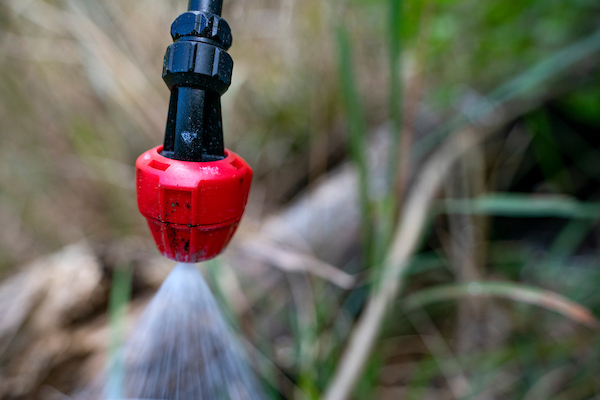Free statewide workshops focus on brush control herbicide application
Events scheduled for Wichita Falls, Corpus Christi and San Angelo
The Texas A&M AgriLife Extension Service and Texas A&M Center for Grazinglands and Ranch Management will host “Advancing the Fundamentals of Brush Management,” a series of free workshops across the state devoted to helping landowners understand and refine their knowledge of herbicide application.

The September workshop series will take place from 8 a.m. to 4 p.m. each day, with lunch provided. Sessions will be held at the following locations:
- Sept. 10: The Wichita Falls Museum of Art, 2 Eureka Circle, Wichita Falls.
- Sept. 17: Texas A&M AgriLife Research and Extension Center at Corpus Christi, 10345 Texas State Highway 44, Corpus Christi.
- Sept. 19: Texas A&M AgriLife Research and Extension Center at San Angelo, 7887 U.S. Highway 87 N., San Angelo
Participants are encouraged to register for the respective workshops at https://tx.ag/BrushManagement.
Controlling woody encroachment on grasslands
Managing woody encroachment is important to restoring the balance of plant communities historically seen on mixed-grassland savanna systems throughout Texas, said Morgan Treadwell, Ph.D., AgriLife Extension range specialist and associate professor in the Texas A&M College of Agriculture and Life Sciences Department of Rangeland, Wildlife and Fisheries Management, San Angelo.
“Many of the undesirable trees and brush are native species that are just out of balance in the plant community,” Treadwell said. “They are occupying more space at higher densities than historically observed, and this can choke out our native perennial grasses.”
This encroachment can negatively affect the available forage for livestock and impact wildlife that rely on grassland habitats.
“Woody encroachment is one of the primary issues facing grazing land managers,” said Jeff Goodwin, Ph.D., director of the Texas A&M Center for Grazinglands and Ranch Management and assistant professor in the Department of Rangeland, Wildlife and Fisheries Management, Bryan-College Station.
“For a number of reasons, brush density and canopies continue to increase across the state, reducing forage productivity and availability, often impacting wildlife habitat for specific species of interest, and impacting the profitability of ranching enterprises,” Goodwin said.
Incorporating a variety of management techniques on the landscape, including herbicide, can help landowners avoid or lessen these negative impacts, he said.
Workshop topics
The workshops will feature expert speakers from the agricultural industry, including herbicide company representatives, livestock producers, farm bill funding agencies and researchers.
The program content will cover the basics of herbicide application and then build upon this information — from selecting the correct nozzle tip and effectively managing your budget to ensuring sufficient coverage and selecting the best application method for your goals.
“We’re keen to share with landowners what we’ve learned and provide the newest information available to treat and effectively manage woody encroachment,” Goodwin said.
Treadwell said while there are many options and strategies for brush management, the fundamentals remain the same and can be amplified with the help of new technology, new chemistry and integration with other brush management strategies.
“Whether you are contemplating herbicide applications or are invested in a long-term herbicide program, this workshop is guaranteed to propel your brush management program forward,” Treadwell said.
For more information, contact Casey Matzke, AgriLife Extension program manager, Bryan-College Station, at casey.matzke@ag.tamu.edu.





